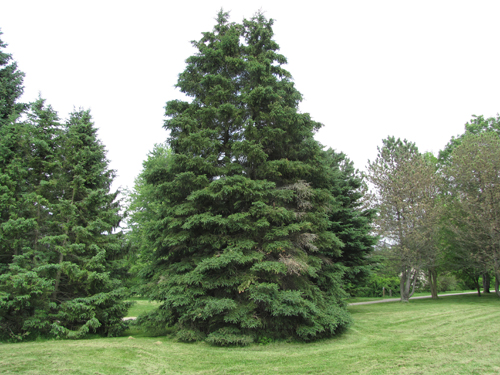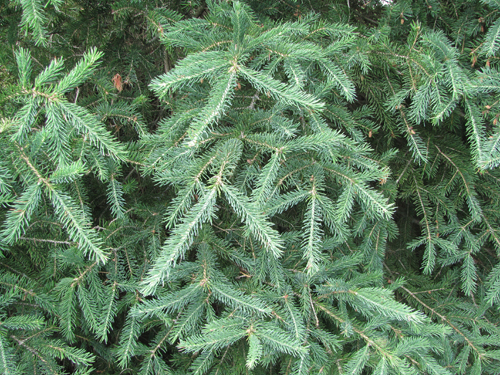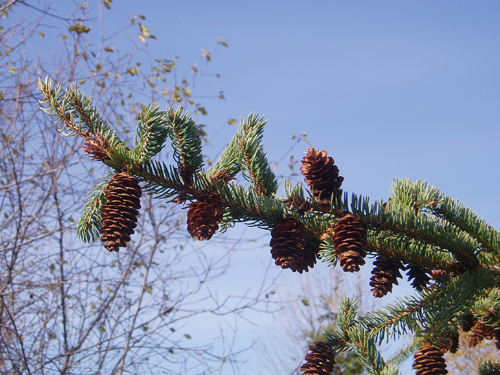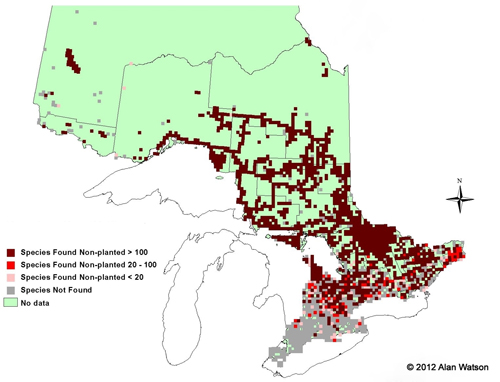White Spruce - Picea glauca
The spruces can be hard to differentiate in Ontario, but can be identified from balsam fir or hemlock by their 4-sided needles. If you can roll the needle between your fingers, it’s a spruce! The white spruce has hairless twigs and blue-ish green needles with white-lines on all sides. This conifer is a very important part of our pulp and paper industry in Ontario. White spruce provides food and habitat for a wide range of species, including deer, red squirrels, porcupines and grouse. Black bears particularly like to eat the inner bark of this tree!

White spruce is most common in northern Ontario – it grows all the way up to the tree line! Northern trees tend to be narrowly conical, but in Southern Ontario can become quite broad. Photo by Chris Earley.

The bluish-green needles of the white spruce. Photo by Chris Earley.

White spruce cones are yellow-pale brown when mature and hang near branch tip ends. They are about 3-6cm long. Photo by Chris Earley.

Ontario Tree Atlas map of non-planted White Spruce. 1995-1999.
References
Farrar, J.L.. 1995. Trees in Canada. Fitzhenry & Whiteside Ltd. Toronto. ON. 504 pp.
Kershaw, L. 2001. Trees in Ontario: Including tall shrubs. Lone Pine Publishing. Edmonton. AB. 240 pp
Muma, W. 2011. Ontario Trees and Shrubs. [Online] Available: www.ontariotrees.com
OMNR, 2011. Ontario Ministry of Natural Resources: Ontario Tree Atlas. [Online] Available: http://www.mnr.gov.on.ca/en/Business/ClimateChange/2ColumnSubPage/267027.html
OMNR, 2008. Ontario’s Biodiversity: Species at Risk.